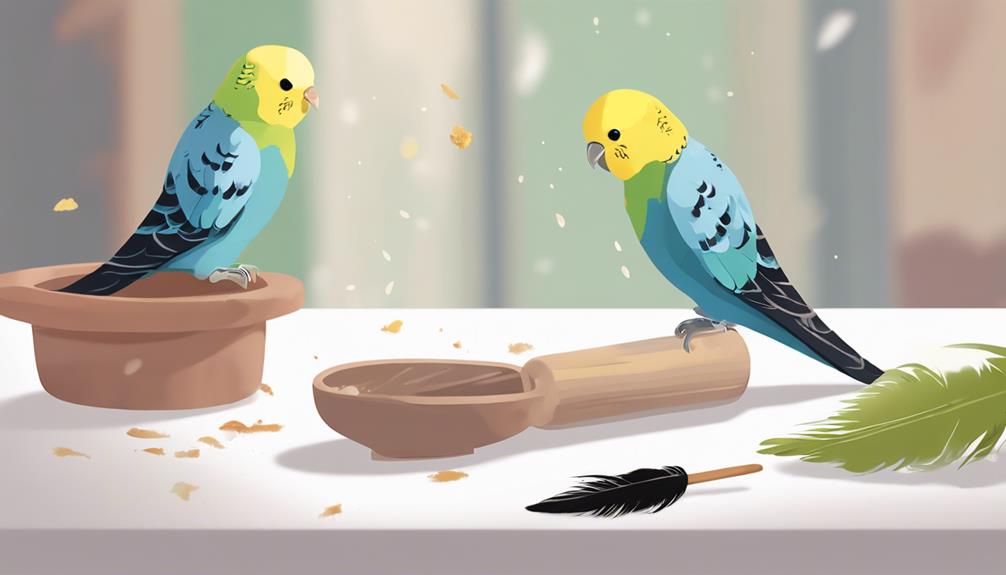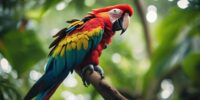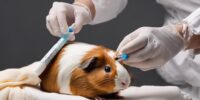How to Manage Moult in Budgerigars (Budgies)

Budgerigars, also known as budgies or parakeets, are popular pet birds known for their vibrant colors and cheerful personalities. One important aspect of budgerigar care is managing their moulting process. Moult is a natural process where birds shed and replace old feathers with new ones. Proper care during this time is essential for a healthy and happy bird.
Key factors to consider when managing moult in budgerigars include a balanced diet rich in vitamins and minerals to support feather growth. Providing a variety of fresh fruits and vegetables, as well as a high-quality seed mix, can help ensure that your bird has the nutrients it needs for healthy feather development. Additionally, maintaining a clean and spacious cage with access to fresh water for bathing can help birds keep their new feathers clean and in good condition.
Regular grooming and monitoring of your budgerigar during the moulting process is also important. Keep an eye out for any signs of stress or discomfort, such as excessive scratching or plucking. If you notice any abnormal behavior or signs of illness, it is best to consult with a veterinarian who specializes in avian care. By taking these key factors into consideration and providing proper care during moult, you can help ensure that your budgerigar remains healthy and happy throughout this natural process.
Understanding the Moult Process
During the annual moult, budgerigars shed and replace their feathers in a cyclical process essential for maintaining their health and vitality. Feather regrowth is a key aspect of this process, ensuring that the budgerigar’s plumage remains in optimal condition. Understanding the molting schedule is crucial for budgie owners to provide the necessary support during this natural cycle.
Budgerigars typically molt once or twice a year, although individual variations can occur. The timing and duration of the moult can vary depending on factors such as the bird’s age, health, and environmental conditions. Owners should observe their budgies closely to identify the signs of impending moult and prepare accordingly. Providing a balanced diet rich in essential nutrients can support feather regrowth and help the budgerigar through this period.
Recognizing Signs of Moult
Recognizing signs of moult in budgerigars is crucial for their overall well-being. Feather loss patterns and new feather growth are key indicators to observe during this natural process.
Feather Loss Patterns
Feather loss patterns in budgerigars reveal the natural process of moulting, a vital stage in their plumage maintenance. During this phase, it’s crucial to recognize the signs that indicate your budgie is moulting and not suffering from other issues like feather plucking due to stress factors.
Understanding these patterns can help you provide proper care and support during this transitional period. Some key points to consider are:
- Feather regrowth: Observing the gradual return of new feathers.
- Moulting stages: Recognizing the different phases of moulting.
- Feather plucking, stress factors: Being aware of behaviors that may indicate stress-induced feather plucking.
New Feather Growth
As the budgerigar transitions through its moulting phase, keen observation will reveal the emergence of fresh plumage, symbolizing a period of renewal and growth.
During this phase, ensuring optimal feather health is paramount. Understanding the budgie’s growth cycle aids in providing appropriate care and attention. Grooming techniques play a crucial role in supporting the development of new feathers. Regularly dusting off debris and ensuring a clean environment can promote healthy feather growth.
Additionally, molting tips such as providing a balanced diet rich in essential nutrients can contribute to the overall well-being of your budgie during this transformative period. By incorporating these practices, one can assist their feathered companion in achieving a smooth and successful moult.
Providing Proper Nutrition
Ensuring budgerigars receive a nutrient-rich diet is paramount during the moulting period.
Fresh fruits and vegetables serve as essential components in their nutritional regimen.
Supplementing with vitamins and minerals can further support their overall health and feather quality.
Nutrient-Rich Diet Essentials
Providing a balanced diet rich in essential nutrients is paramount for maintaining optimal health during the moult period in budgerigars. Budgies require specific nutrients to support feather growth and overall well-being.
- Protein Sources: Including high-quality protein in their diet supports feather regeneration and muscle maintenance.
- Hydration Importance: Keeping budgies well-hydrated is crucial for feather health and overall physiological functions.
- Vitamins and Minerals: Ensuring they receive a variety of vitamins and minerals will aid in maintaining a strong immune system and promoting healthy skin and feathers.
Fresh Fruits and Veggies
To ensure optimal health and nutrition for budgerigars during the moult period, incorporating fresh fruits and veggies is essential. Seasonal changes can impact budgies’ dietary needs, making it crucial to provide a variety of fresh produce to support their overall well-being.
Fruits and vegetables not only contribute to feather health but also help maintain proper hydration levels in budgerigars. These natural foods are rich in vitamins, minerals, and antioxidants that aid in the moult process and support the bird’s immune system.
Vitamin and Mineral Supplements
During the moult period, budgerigars benefit greatly from carefully selected vitamin and mineral supplements to ensure their overall health and well-being. These supplements provide essential nutrients that support feather growth and strengthen the immune system. Proper dosage recommendations are crucial to avoid deficiencies or excess intake, promoting optimal health for the birds. However, it’s important to be aware of potential risks associated with over-supplementation, which can lead to toxicity or imbalances in their diet. Consulting with a veterinarian or avian specialist is advisable to determine the specific needs of each budgie and tailor the supplementation plan accordingly. Remember, a balanced approach to providing these supplements will contribute significantly to your budgerigar’s well-being.
- Supplement benefits
- Dosage recommendations
- Potential risks, Consultation advice
Creating a Comfortable Environment
What elements must be incorporated to ensure a budgerigar’s environment is conducive to a successful moulting process? Temperature regulation plays a crucial role in creating a comfortable space for your budgie during this delicate phase. Maintaining a consistent temperature between 65-75°F (18-24°C) is ideal for supporting healthy moulting. Sudden temperature fluctuations can stress your budgie and interfere with the moulting process, so it’s essential to keep the environment stable.
In addition to temperature control, grooming techniques are paramount in ensuring your budgie’s comfort during moulting. Providing a shallow dish for bathing can help your budgie keep its feathers clean and healthy. Regular baths can aid in the removal of old feathers and promote the growth of new ones. Additionally, offering your budgie access to grooming materials like mineral blocks or cuttlebones can assist in maintaining beak and nail health.
Handling Feather Care
Ensuring meticulous feather care is an essential aspect of maintaining your budgerigar’s overall health and well-being. Budgies rely on their feathers not only for flight and protection but also for regulating body temperature. Here are some key points to consider when handling feather care:
- Preening Techniques: Encourage natural preening behavior by providing your budgie with safe toys or mirrors in its cage. Preening helps distribute natural oils, removes dirt, and keeps feathers in good condition.
- Grooming Routines: Regularly inspect your budgie’s feathers for signs of damage, mites, or excessive molting. Establish a grooming routine that includes gentle feather checks and the removal of any broken or damaged feathers to prevent irritation or infection.
- Healthy Diet: Ensure your budgie’s diet is rich in essential nutrients like protein, vitamins, and minerals to support feather growth and overall health.
Offering Supportive Supplements
To enhance your budgerigar’s feather health and vitality, consider incorporating supportive supplements into its daily care routine. These supplements can provide essential nutrients that may be lacking in your bird’s diet, supporting overall feather quality and growth. By carefully selecting supplements rich in vitamins, minerals, and amino acids, you can help your budgie maintain strong and vibrant feathers throughout its moult cycle.
Supplement benefits include promoting healthy feather regrowth, reducing moult-related stress, and enhancing the overall appearance of your budgerigar’s plumage. When offering supportive supplements, it’s essential to make dietary adjustments as needed to ensure your bird receives a balanced and nutritious diet. Consult with a vet or avian specialist to determine the most suitable supplements for your budgie’s specific needs.
Seeking Veterinary Care if Needed
Seeking timely veterinary care for your budgerigar during periods of health concern is crucial in ensuring its overall well-being and addressing any potential issues promptly. In emergency situations or when professional assistance is necessary, it’s imperative to act swiftly to safeguard your bird’s health. Timely intervention can make a significant difference in the outcome of any health issue your budgie may be facing.
Expert guidance from a qualified avian veterinarian can provide you with the necessary support and treatment options tailored to your bird’s specific needs. Remember, your budgerigar’s well-being is of utmost importance, and seeking veterinary care when needed showcases your commitment to providing the best possible care for your feathered companion.
Immediate action is vital in emergency situations to prevent further complications.
Consulting a vet promptly can offer professional assistance and accurate diagnosis.
Timely intervention can lead to effective treatment plans and a quicker recovery process.
Frequently Asked Questions
Can Budgies Experience Any Discomfort or Pain During the Moulting Process?
During molting, budgies may experience discomfort due to itching and irritation as old feathers shed and new ones grow. Feather care is crucial, along with meeting their nutritional needs to support healthy plumage growth.
How Often Should I Expect My Budgie to Go Through a Moult?
Budgies typically molt once or twice a year, shedding old feathers to make way for new ones. Feather care during this time is vital. Providing a balanced diet rich in nutrients like protein and vitamins can support healthy feather growth.
Are There Any Specific Grooming Techniques I Should Use to Help My Budgie During the Moult?
During moult, grooming tips are crucial for budgie feather care. Ensure proper nutrition supports healthy feather growth. Incorporate a regular bathing routine to help your budgie manage the moult process effectively, promoting overall well-being.
Can Certain Environmental Factors, Such as Temperature or Humidity, Affect the Moult Process?
Environmental factors, such as temperature and humidity, can indeed impact a budgie’s moulting process. Maintaining optimal conditions can promote feather health and support a smooth transition. A balanced diet is also crucial during this period to aid in moulting behavior.
Are There Any Warning Signs That Indicate a More Serious Health Issue Related to Moult in Budgies?
Warning signs such as excessive feather loss, bald patches, or changes in feather color or texture in budgies can indicate a more serious health issue. Maintaining nutritional balance is crucial for overall feather health.











